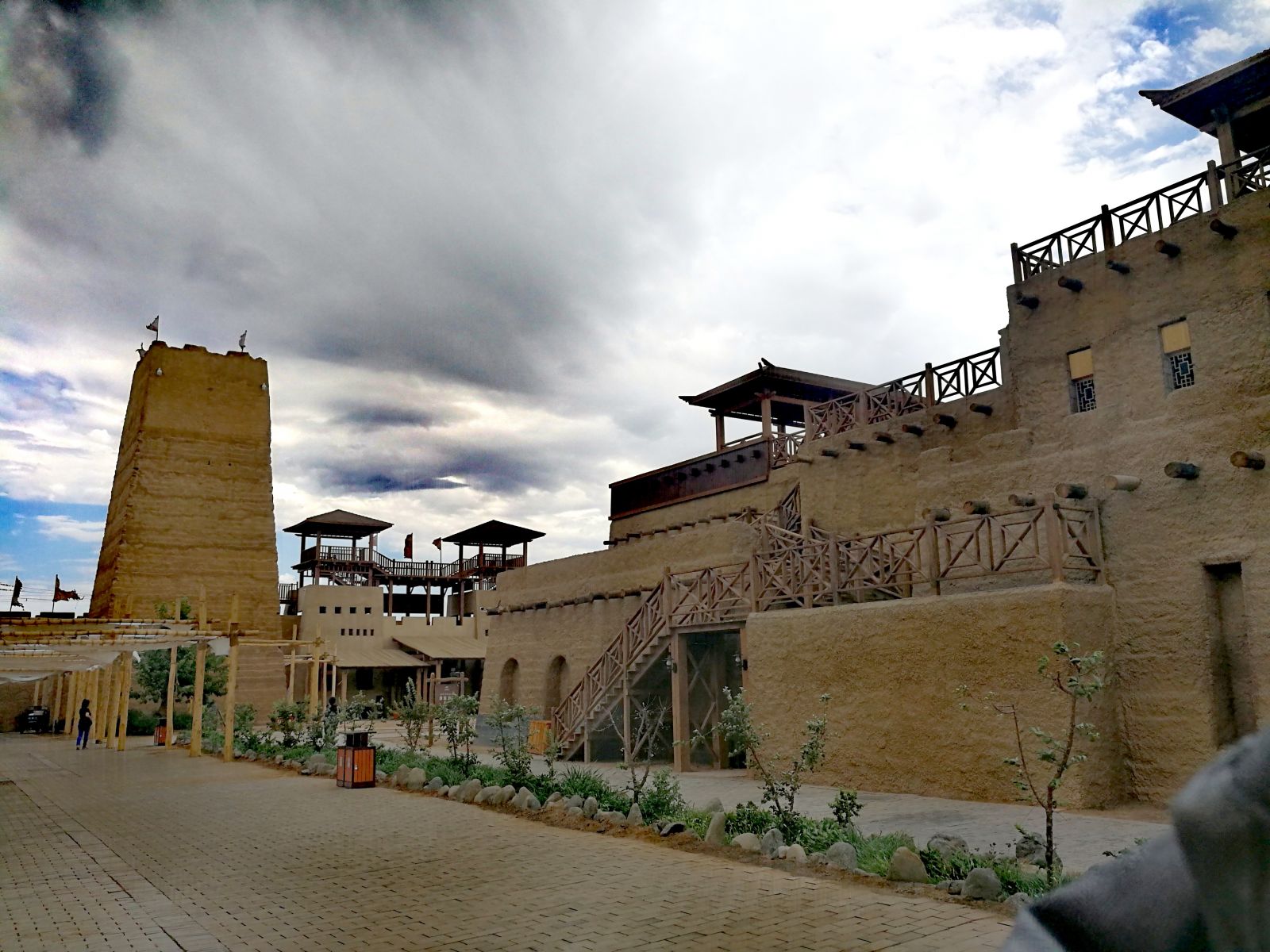Chinese Name: 坎儿井 Pronunciation: Kǎnér Jǐng
Suggested Visiting Hours: 1-3 Hours
Total Length: 5,000 kilometers
Function: Catchment system for irrigation and residential use
Best Visiting Time: Autumn (August to December)
Address: Folk Garden of the Karez Well System, No.888 Xincheng Ximen Village, Yaer Town, Turpan, Xinjiang, China
| Tickets | Price |
| Admission Fee of Folk Garden of the Karez Well System | 40 yuan |
1. Children under 1.2 meters and senior citizens over 70 years old with a valid ID card or passport are free of charge.
2. Children with a height of 1.2 to 1.4 meters and senior citizens aged 60 to 69 years old with a valid ID card or passport share half price.
| Attractions | Peak Season (April 21st to October 20th) |
Low Season (October 21st to April 20th of next year) |
| Folk Garden of the Karez Well System | 8:00-20:00 | 10:00-18:30 |
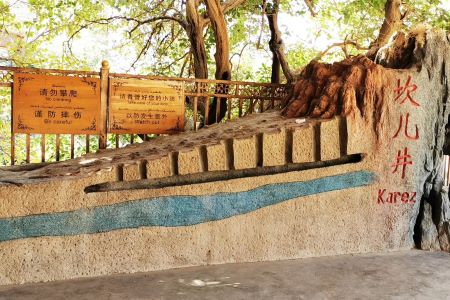
The Karez Well System, located in the Xinjiang Uygur Autonomous Region of China, is a kind of underground water conservancy project created by the working people in arid areas in the long historical development. It is an irrigation system of wells connected by an underground channel. It is the crystallization of the diligence and wisdom of the ancients. Most of the existing irrigation systems in Turpan have been built since the Qing Dynasty. Its total length is about 5000 kilometers with over 1100 Karez Well Systems, referred to as the “Underground Great Wall”. The Karez Well System, the Great Wall, and the Beijing-Hangzhou Grand Canal are known as the three major projects in ancient China.
The Karez Well System is the life source of Turpan, without which there would be no Turpan culture. Melting snow water from Tianshan Mountain is the water source of the system. By using the natural slope of the mountains, local people draw a large amount of rainwater, glacier, and snow meltwater infiltrated into the ground in spring and summer out of the surface for irrigation. Karez also can function as the natural air conditioner for the locals to have a rest when they are tired on hot summer days. In Turpan, such an extremely arid area, the Karez Well System is of indispensable significance to develop the local agricultural production and to meet the needs of residents.
The Karez Well System is not only a splendid cultural achievement under the Chinese civilization system but also an important part of world civilization. The prosperity of Karez is based on the social, economic, and cultural development of Turpan. At the same time, Karez also witnessed the economic and cultural exchanges between the East and the West. Turpan civilization, which has a long history for many years, further clarifies the close relationship between the development and utilization of nature, especially water resources, and the replacement of civilization in arid areas.
The Karez Well System is one of the characteristics of the Xinjiang irrigation system. Because of the special structure and special function of its irrigation system, people have been paying attention to it for a long time. As for the origin of the Karez Well System, there are certain limitations in literature and archaeology. Although there are some sites and relics, it is still difficult to confirm where they came from because of no written records. About its origin, there are mainly three kinds of views as follows.

First and foremost, some people think the Karez Well System in Xinjiang originated in Persia that is known as Iran nowadays. They believe that the name “Karez” has the same pronunciation and spelling as the word “Karez” in the Persian language, which means underground waterway. The earliest Karez in the world can be traced back to Persia in the 8th century B.C. Iran is still the place with the longest use age, the largest number, and the highest degree of development of Karez in the world. It is considered to be the earliest transmission center of Karez in the world.
The second view is that the Karez Well System in Xinjiang was from the mainland of China. Karez originated from the "well canal" in ancient China. Some people compared the structural details of the ancient Chinese "well canal" with the structure and excavation method of Karez. Finally, it is found that although the water sources are different, one from surface flow and the other from underground flow, the methods of digging the well channel are basically the same.
In addition, most people believe that the Karez Well System in Xinjiang stemmed from the invention of Uygur ancestors according to the local natural environment and geographical conditions. In Turpan, there is a popular folktale about the Uygur ancestors digging underground channels to lead water to the ground to nurture everything. Scholars speculate that Karez in Turpan Basin has a history of at least 2,000 years. Moreover, the clear and visible Karez patterns carved in the newly discovered rock paintings in Kokjoy Township are about 4000-6000 years old, proving the truth of the third view.
The Karez Well System is mainly distributed in central and western Asian countries and regions, such as Iran, Pakistan, and Northwest China. Generally speaking, a Karez is 3 kilometers long, and the longest one can reach about 20 to 30 kilometers. Karezs in Turpan are distributed in very dry areas, mainly around the Flaming Mountains. The Karez Well System is usually divided into three types according to hydrogeological conditions and distribution.
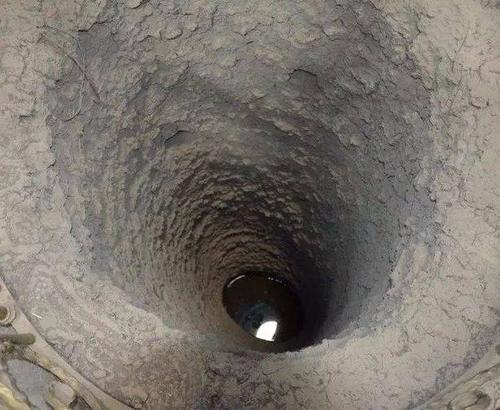
The Karez Well System in Xinjiang is a special irrigation system with an ingenious structure, which is composed of four parts: shaft, culvert, open channel, and small reservoir. Generally speaking, the structural principle of Karez is to firstly find its water source at the place where the snow water flows in high mountains. At a certain interval, a shaft of different depths will be drilled, and then a culvert will be built at the bottom of the shaft according to the terrain, so as to connect the wells and divert water downstream. The water outlet of the underground channel is connected with the surface channel, which leads the underground water to the surface to irrigate the mulberry field.

A shaft is a channel for transporting the underground silt when excavating or cleaning the Karez culvert, and it is also an air vent. The depth of the well varies with the terrain and groundwater level. Generally, the closer to the water source, the deeper the shaft is. A shaft can reach up to more than 90 meters. The distance between shafts differs from the length of the Karez. Generally, there is a shaft every 20-70 meters, whose wellhead is often rectangular or circular. When you drive near Turpan, you can see piles of round earth bags on the Gobi desert, which extends to the oasis in an orderly way. These are the shafts of the Karez Well System.
A culvert, also known as an underground channel, is the main body of Karez. It is usually dug from low to high according to a certain slope so that the water can flow out of the surface automatically. The culvert is generally 1.7 meters high and 1.2 meters wide. Some of them are 100-200 meters and some are even 25 kilometers long. All the culverts are excavated underground, so the dredging project is very arduous. The water flowing out of culverts is rich in many minerals and trace elements. Local residents have been drinking it for hundreds of years, and many of them live to be over 100 years old. Therefore, Turpan is known as the hometown of longevity in China.
The water flows out of the surface from the culverts, and then enters into the open channels. As the name suggests, an open channel is a channel on the surface of the earth. People build a reservoir with the function of storing and regulating water in a certain place. Water is stored in reservoirs and is sent wherever it is needed.
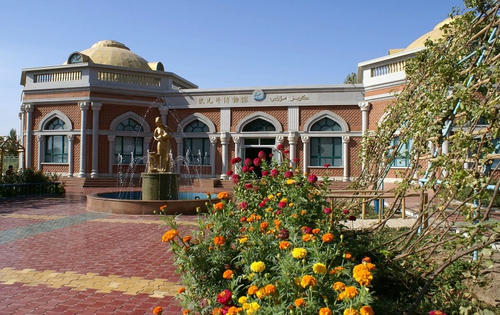
The Karez Well System, the symbol of Turpan, is the embodiment of the Turpan people's spirit, representing the diligence and wisdom of Turpan people. In the long process of historical development, the Karez Well System, as the water cultural heritage of Turpan, has an important cultural connotation. It has become a milestone in the history of human civilization for many years. Not only does it prove to be the emotional attachment of the local people but also a link between Turpan and the mainland.
The Karez Well System can be seen as the mother river of Turpan. On the one hand, it is an important part of the culture of well and canal irrigation of the Chinese nation. On the other hand, it can be honored as a typical ingenious creation by the working people of all ethnic groups who have lived in Turpan for generations, transforming and utilizing nature. It can be said that without the Karez Well System, there would be no Turpan, no unique national history and culture of Karez, and no oasis civilization of Xinjiang. The Karez Well System has witnessed the prosperity and development of oasis, which is a milestone in the history of oasis agriculture in arid areas.

The Karez Well System is constructed with the most environmentally friendly technology, which causes less damage to the surface and soil erosion, and protects the natural ecological environment. It uses the culvert and shaft to lead groundwater out of the ground, which not only reduces the evaporation of water on the ground but also makes full use of groundwater. This is a typical way of Uygur people’s harmonious utilization of natural resources. In addition to agricultural irrigation and drinking, the Kaner Well System also irrigates a large amount of desert vegetation.
The Karez Well System is an important water source for oasis vegetation. As long as the well water flows, the green area of the places has been increased, and their ecological environment has been restored. Meanwhile, the well water expands the green area of open channels, small reservoirs, and grasslands. Thus, the regional microclimate has been improved so as to promote the benign development of the ecological environment in the small area. Therefore, the Karez Well System plays an important role in oasis ecology.

The Karez Well System is not only a great water conservancy project but also a precious historical and cultural heritage. It is well-known in the world and still provides people with water and inexhaustible tourism resources. With its unique beautiful scenery, Karez has attracted many domestic and foreign tourists to visit, creating huge economic and social benefits, especially in today's emphasis on the development of ecological civilization. Therefore, Karez has incomparable tourism development value. At present, there are five tourist attractions developed around the Karez Well System in the Turpan area, two of which are mainly themed on Karez, and both of which are located in the rural area in the suburb of Turpan.
According to statistics, in 2005, the main tourist attractions centering on the Karez Well System in Turpan received as many as 500,000 tourists, and the tourism revenue exceeded 5 million yuan, which became a new growth point of Turpan's tourism industry. In 2007, the number of tourists reached nearly 1.27 million, accounting for 31.37% of the total number of tourists. In 2006, the Karez Well System became one of the sixth batch of national key cultural relics protection units. While enriching the tourism projects of Turpan, this scenic spot improves the status of Turpan as a tourism city and promotes the region’s economic development.
Covering an area of about 146,800 square meters, the Folk Garden of the Karez Well System is located in the east of Turpan City, about 3 kilometers away from the city center. As one of the most famous scenic spots in Turpan, the Folk Garden is mainly a scenic spot with the theme of displaying Karez culture. Not only can people visit the Karez Well System with a history of more than 400 years and learn about its historical development process, but also can learn the situation of Chinese Uygur folk customs. The Folk Garden was approved as a national 4A scenic spot in 2011 and was shortlisted in "The 100 Most Amazing Scenic Spots in Northwest China" in 2018.

Folk Garden of the Karez Well System is a good place to travel in Turpan with a unique Turpan Karez Museum, prototypes of Karez, and hotels and restaurants with a special Uygur style. Tourists can have a systematic understanding of Xinjiang Karez culture, and have a taste of the delicious local food while enjoying the Uygur song and dance performances. Most tourists come here for a tour of about 2 hours, and it takes longer to go shopping or have meals. Some tourists will stay in the scenic area for one night to experience the Uygur residential life with Xinjiang characteristics.
The main building in the Folk Garden of the Karez Well System is the Turpan Karez Museum, which can be seen as soon as you enter the gate. On the north side of the museum is another main landscape in the scenic area - the prototype of Karez, which is about 300 meters long. Visitors can enter the underground Karez passageway to watch how the Karez works on site. In addition to Karez culture, there are also raisin drying rooms, Chinese Nang pit, and other traditional folk buildings of Xinjiang. It is very interesting for tourists to learn about the process of drying raisins and baking Nangs (a kind of crusty pancakes).
Turpan Karez Museum is located in the Folk Garden of the Karez Well System. The museum was built with an investment of 2.4 million yuan and it was completed and opened to the public in June 2007. It is a unique thematic museum. The museum can be divided into two parts, a ground exhibition area, and an underground exhibition area. It provides people an overall view of the development of the Karez Well System in Xinjiang, including an underground visiting passageway with more than 100 meters long, a ground exhibition hall with about 500 square meters, Karez distribution maps, the cutaway picture, and so on.
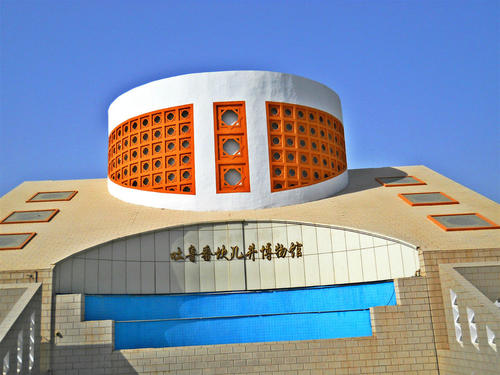
Turpan Karez Museum is built based on a Karez called Miyimu Aji, who is the host of the excavation of this Karez. In Turpan, every Karez has a name. Some are named after the well-diggers, some are named after animals or plants, and some are named after the geographical location or the taste of water. The Karez Miyimu Aji is referred to as the most typical and famous Karez in Turpan. It has a long history of more than 800 years, with a total length of 25 kilometers and a daily water supply of more than 46,000 square meters. The 100-meter-long underground visiting passageway in the museum is actually a section of the downstream well canal of this Karez Miyimu Aji.
Turpan Karez Museum is a place you cannot miss if you are interested in the history and development of the Karez Well System in Xinjiang. Walking into the museum, the first sight is a sand table, which intuitively shows visitors the scene of Karez crossing the Gobi and leading the snow water of Tianshan Mountain to the oases. Through a large number of pictures, objects, and models, the structure, the distribution area, function, and research results of the Karez Well System are presented to tourists in an easy-to-understand way. Thus, tourists can truly feel the historical changes and construction process of the Karez Well System, and can directly feel the charm of the so-called "Underground Great Wall", the Karez Well System.
Take bus 101 and get off at Yaer Town Government. Go east along Xincheng Road and turn right at the first crossing. You need to walk 1 kilometer to get to the Folk Garden of the Karez Well System.
Chinese: 请带我去坎儿井民俗园。English: Please take me to the Folk Garden of the Karez Well System.
If you take a taxi from the Turpan Jiaohe Airport, it takes about 25 minutes (30 yuan).
If you take a taxi from the Turpan Passenger Transport Center, it takes about 15 minutes (10 yuan).
